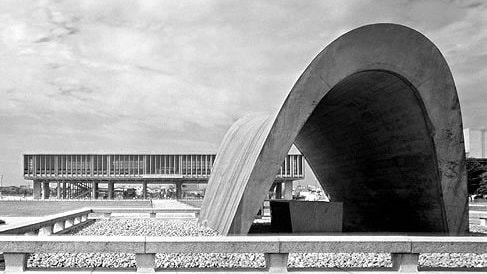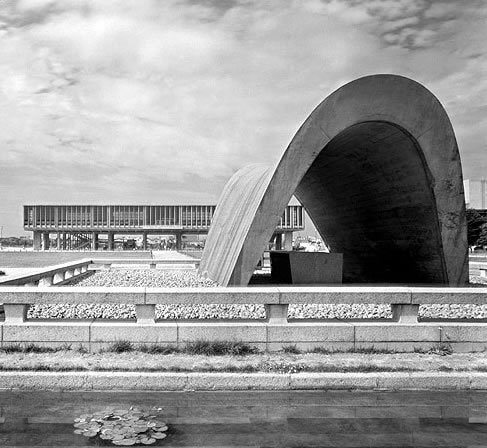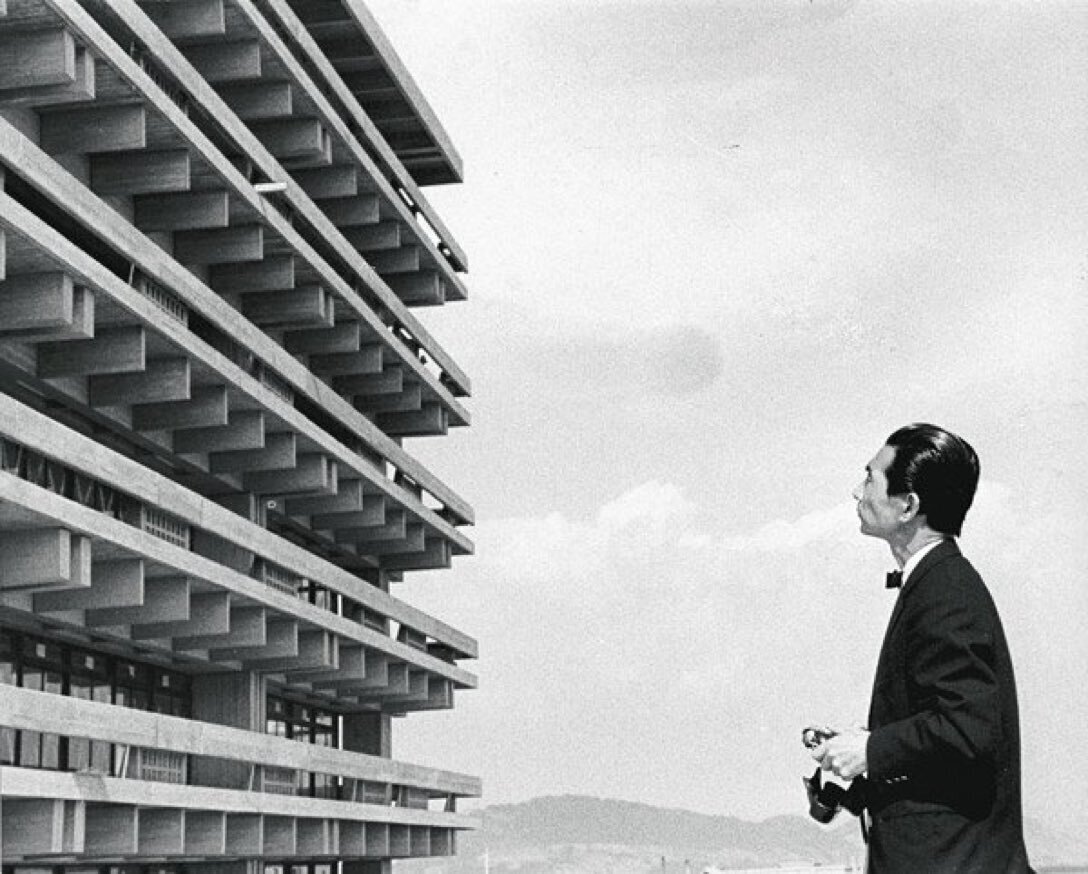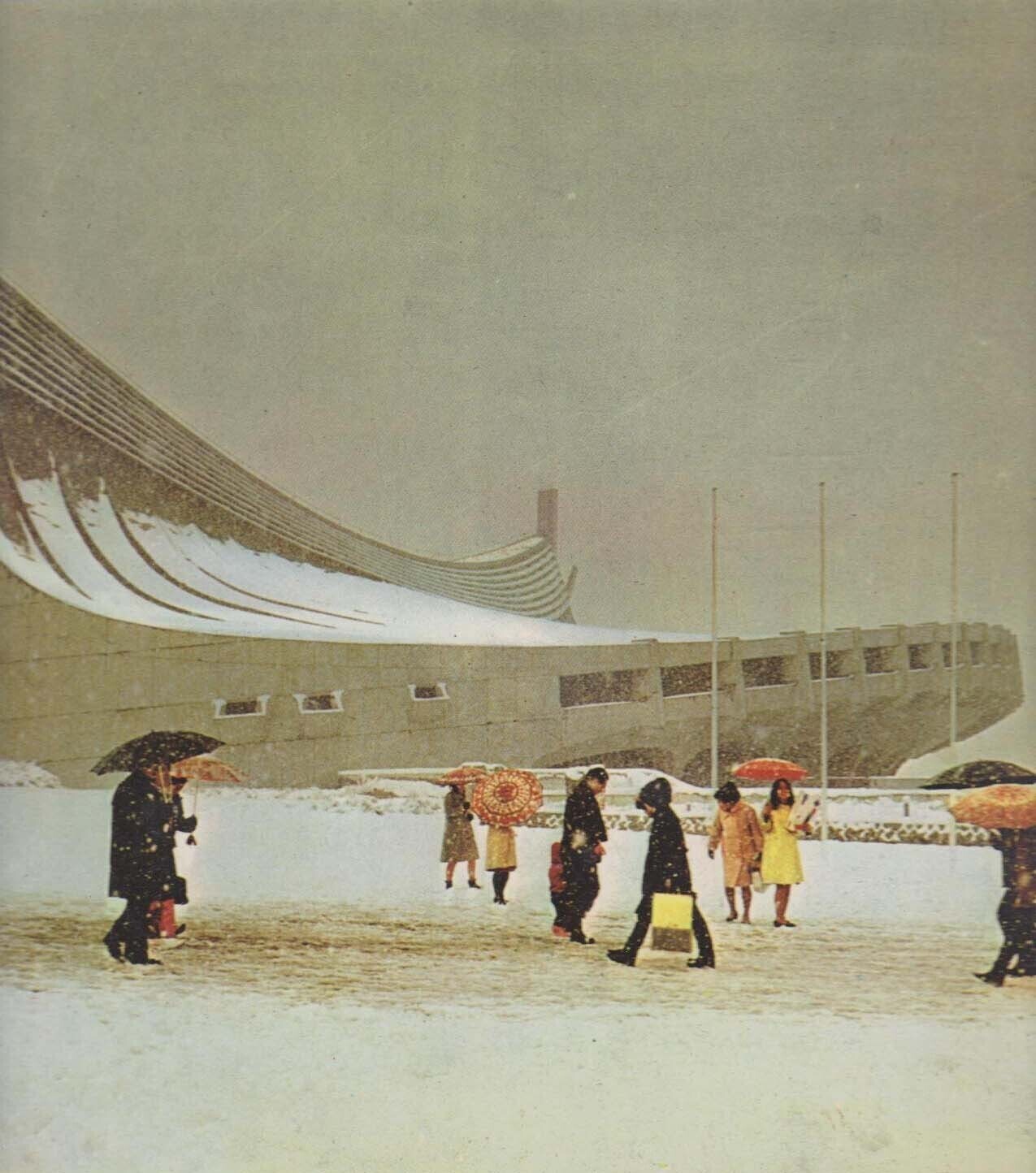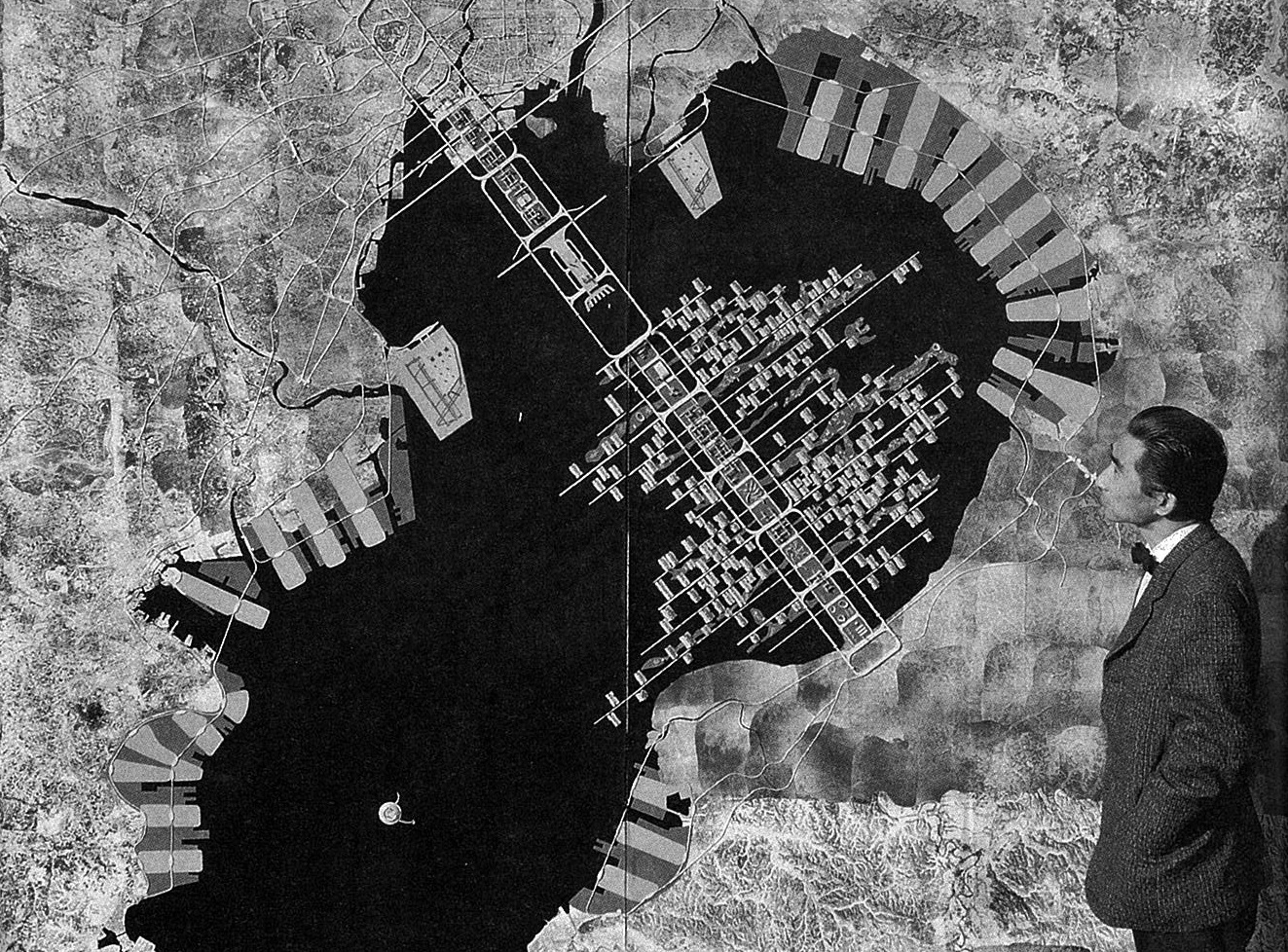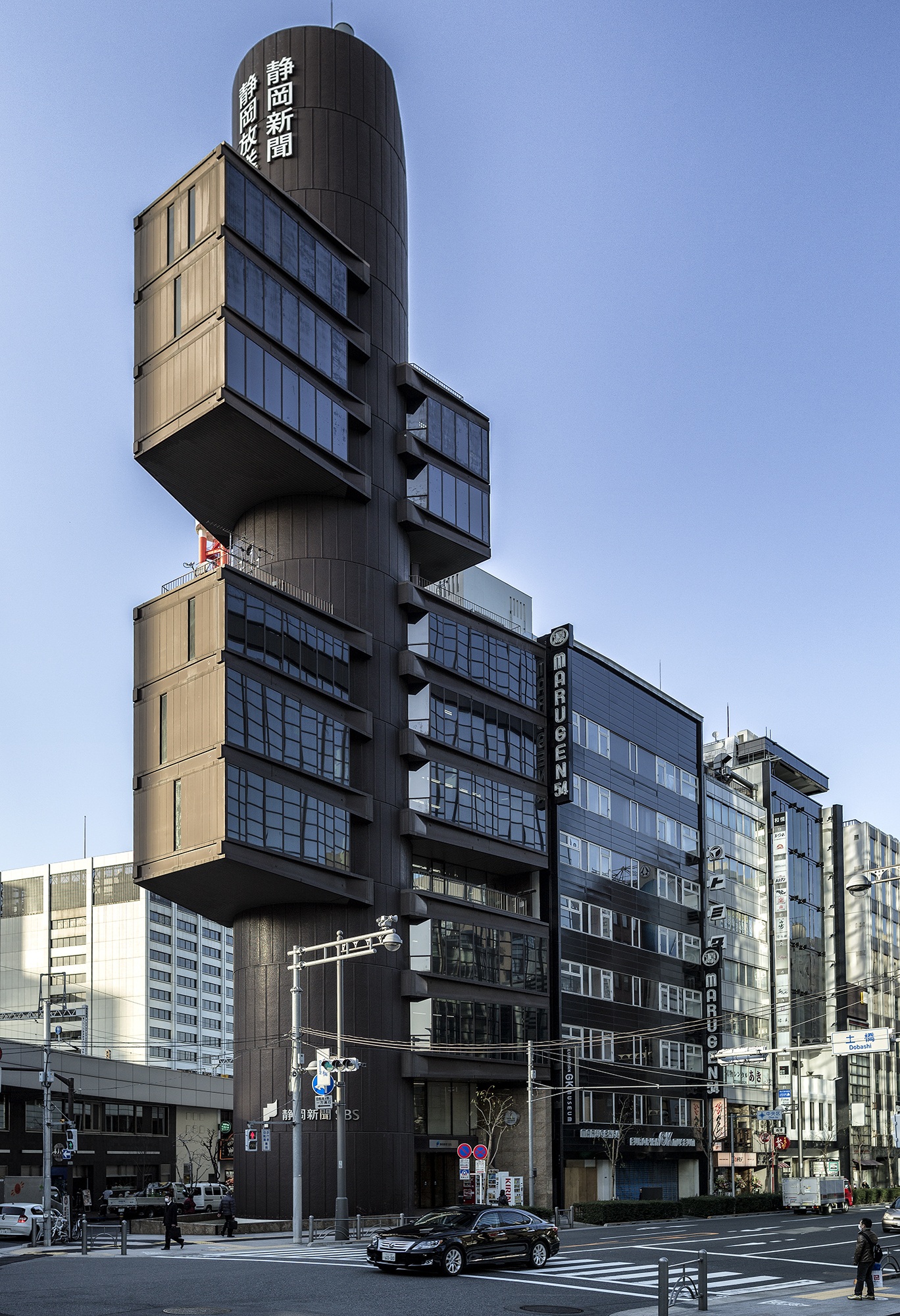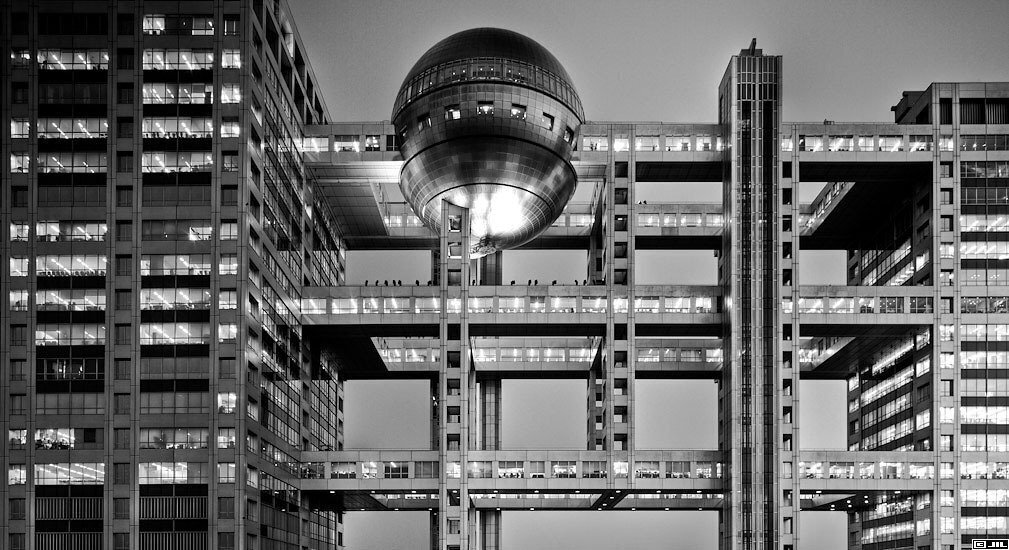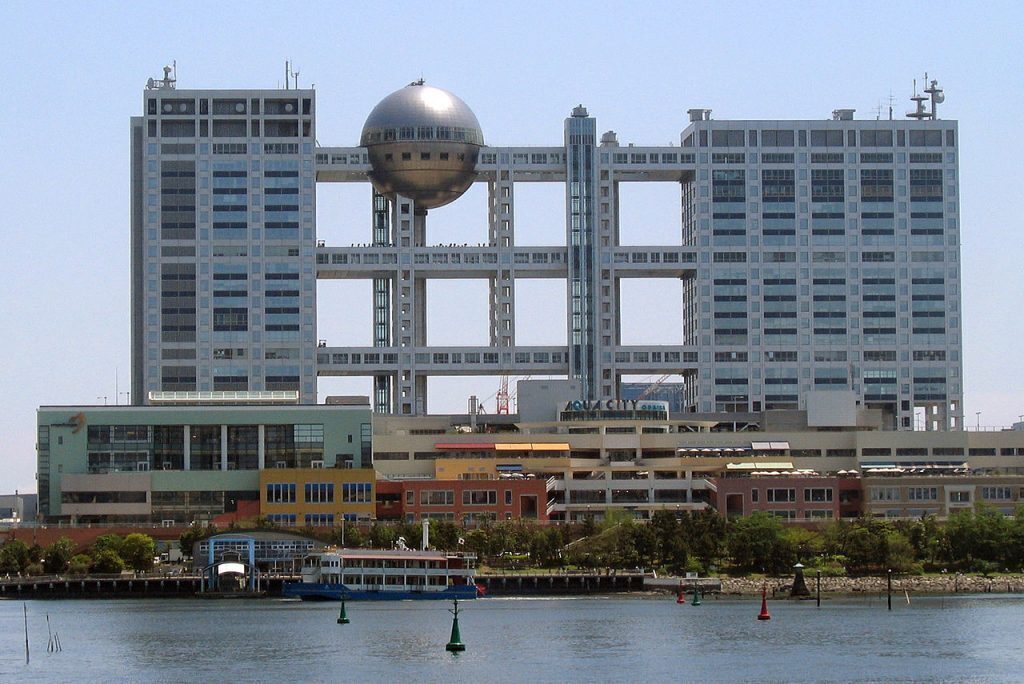Kenzō Tange was the main architect of post-war Japan. His parents died during the bombing of Hiroshima, and he designed the Hiroshima Peace Memorial Park built in the centre of the destroyed city as a farewell to the past. His municipal buildings in Tokyo, Kagawa, and Nichinan became symbols of the new ultramodern Japan.
Combining European modernism with Japanese tradition, Tange created a new national architecture free from excessive ornamentation and exotic motifs. “The role of tradition is that of a catalyst, which furthers a chemical reaction but is no longer detectable in the end result,” he wrote. However, all of his projects are recognisably Japanese, and some, like the Olympic Arena in Tokyo, are clearly based on the country’s ancient monuments.
Striking as his buildings are, Tange designed them as elements of the urban space and dreamt about working on big urban planning projects. He believed planners needed to recognise the difference between contemporary mega cities and historical settlements and suggested that new habitable volumes be built around a three-level transport infrastructure. His reconstruction project for central Tokyo based on this principle became one of the greatest urban planning utopias of the twentieth century. Although the project was not built, its key principles were implemented in several buildings, including Shizuoka Tower and Fuji Television headquarters—experiments that grew into the Metabolist movement.
Inspired to become an architect by Le Corbusier’s projects he saw in a magazine, Tange was the first Japanese architect to gain acclaim outside of his homeland. A student of Kunio Maekawa, who had worked with Le Corbusier in his Paris office, he was a mentor to the biggest Japanese architects of the younger generation: Arata Isozaki, Kisho Kurokawa, and Fumihiko Maki.
Tange’s strong spatial images and unusual structural solutions have inspired many architects across the world, including in the USSR. In 1987, he was awarded the Pritzker Prize—an acknowledgement of the importance his legacy.
